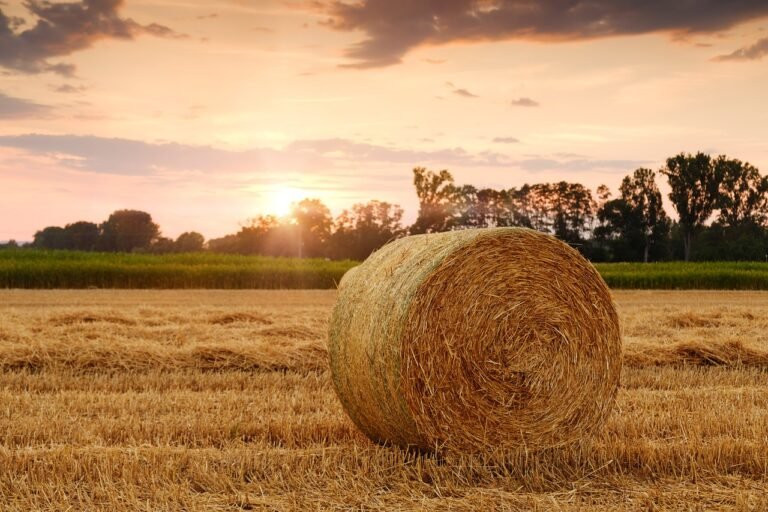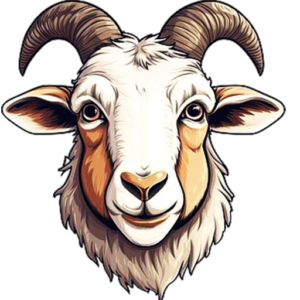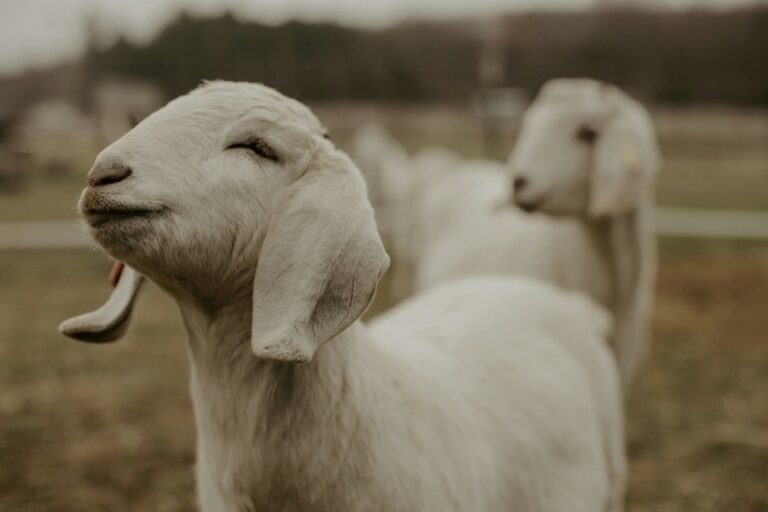
Bale Feeding and Grazing: Top Techniques and Secrets
Bale feeding and bale grazing are essential methods for efficiently feeding your livestock during the winter months, particularly in regions that experience heavy snowfall and colder climates like Wisconsin. These approaches work well for those managing goats and sheep, but each method comes with its own set of benefits and challenges. Whether you’re considering intact bales, unrolled hay, or managing pasture during different seasons, understanding these techniques can transform your farm operations.
In this guide, we’ll explore bale feeding and bale grazing, along with the techniques, benefits, and considerations that make these approaches so valuable. Drawing from my own personal experience on the farm at Cylon Rolling Acres, I’ll share the secrets and tips we’ve uncovered over the years.
The Fundamentals of Bale Feeding and Bale Grazing
In Wisconsin, winter bale feeding often becomes the go-to solution when pasture forage is no longer available due to snowfall and colder months. As a farmer, relying on stockpiled forage or extended grazing becomes impossible, and shifting to bale feeding becomes necessary to keep the herd healthy.
Bale grazing is a simple yet efficient way to feed goats and sheep during the winter. The practice involves placing large round bales directly on the ground in a pasture, a hay field, or even a row crop field. Livestock are allowed to feed off the bale, and as they consume the hay, they leave behind organic matter in the form of manure, urine, and uneaten hay. This acts as a natural fertilizer for the soil, improving its nutrient content and preparing it for the next grazing season.
Why Bale Grazing Works Well for Goats and Sheep?
For many farmers, especially those who raise meat goats, the initial method of feeding hay in a barn is often replaced by bale grazing. Over the years, we’ve made significant changes to our routine, and have found that bale grazing provides not only time-saving benefits, but also helps improve the health of the soil and pastures. The results speak for themselves, and we’ve seen these changes contribute positively to our farm’s overall productivity.
One of the key advantages of bale grazing is its ability to build soil fertility. The waste left behind during feeding distributes nutrients evenly across the pasture, improving the soil for the next season. In addition, leaving bales intact helps avoid excessive hay waste and reduces the risk of parasite issues in small ruminants, like goats and sheep.

Placement and Strategies: Key Techniques for Success
Understanding the right techniques for bale grazing sheep and goats is crucial. These animals are smaller than cattle, so careful planning of the bale density and placement is needed to ensure they receive equal access to feed. Here’s what we’ve found effective on our farm:
- Bale density: Think of each bale as a concentrated dose of nutrients. Strategically placing multiple bales across the pasture in a grid pattern can help target areas with poor soil conditions. This method also maximizes the nutrients distributed across the farm.
- Bale feeders: Using a four-sided collapsible panel bale feeder can significantly reduce hay waste and protect your livestock from injuries as the bale gets eaten down. These feeders are ideal for keeping bales intact while minimizing the risk of livestock collapsing the bale and getting hurt.
- Spring considerations: In the spring, when we face wetter conditions, keeping the bales in tact with the feeder helps protect the hay from moisture damage. The round bale’s cured outer layer also acts as a barrier against rain.
Tackling Challenges: Bale Grazing in Winter and Frozen Conditions
While bale grazing works wonderfully in colder climates, dealing with frozen ground and heavy snow in Wisconsin can pose some challenges. Setting up electric fences, for example, can be tricky in winter due to frozen posts and inadequate energized wire. However, we’ve managed this by setting up fencing with multiple strands of polywire, which ensures that our goats and sheep are kept out of pre-set bales.
Another alternative is using cattle panels and t-posts, which can be set up before the ground freezes, allowing us to move the panels and open up the bales as needed. Pre-placing plastic-wrapped bales also works well in extreme winter conditions.
Why We Don’t Use a Bale Unroller?
Many farmers might consider a bale unroller, but we’ve opted to keep our bales intact for several reasons. Firstly, when round bales are unrolled, they tend to get pooped and peed on more quickly, especially with smaller ruminants like goats and sheep. This leads to a higher risk of gastrointestinal and parasite issues, which we try to avoid at all costs.
Additionally, unrolling hay in wet or muddy conditions could result in soil damage from increased hoof action. Instead, keeping bales intact works better for our herd, especially in winter, when snow protects the hay without compromising its quality.

The Advantages of Bale Grazing
The advantages of bale grazing extend far beyond just feeding your herd. The practice has significant environmental benefits as well. Some of the key advantages include:
- Increased moisture retention: The addition of organic matter from manure and hay waste improves soil moisture levels, which is particularly important in dry conditions.
- Improved soil fertility: Bale grazing naturally spreads nutrients from both the hay and the livestock across the pasture, enhancing the overall quality of the soil.
- Carbon sequestration: By increasing the amount of organic material in the soil, bale grazing contributes to building up carbon in the soil profile, promoting future plant growth and increasing plant diversity.
Disadvantages and Considerations
While bale grazing offers numerous advantages, it also comes with its set of challenges. Some disadvantages include:
- Pre-planning: Bale grazing requires careful planning in advance. You’ll need to map out where to place the bales, the number of feeders, and how you’ll manage the feeding throughout the winter.
- Wildlife issues: Bale grazing can attract unwanted wildlife, especially during times of heavy snow. Managing the presence of deer or other animals is an important consideration.
- Waste management: Sometimes, the hay waste can become so thick that it kills off existing pasture growth. In these cases, spreading the waste in the spring may be necessary.
Before and After: The Long-Term Results
One of the most exciting aspects of bale grazing is how quickly the results are visible. After just one season, the differences in pasture quality are often noticeable. To get a more in-depth understanding of how this technique is affecting your land, I recommend conducting regular soil testing. This allows you to make adjustments to your grazing techniques and monitor long-term changes.
On our farm, Cylon Rolling Acres, we’ve noticed improved water infiltration, better soil aggregate structure, and more diverse plant growth in the areas where we practice bale grazing. We use a simple shovel test to check the temperature and structure of the soil, providing us with valuable insights year-round.

Conclusion: Bale Feeding and Grazing
Bale feeding with bale grazing is more than just a method for keeping your livestock well-fed during the winter months. It’s a comprehensive approach to improving the health of your soil, enhancing the quality of your pastures, and making farm management more efficient. With careful planning, thoughtful use of feeders, and attention to techniques, you can unlock the full potential of bale grazing for your goats, sheep, and overall farm ecosystem.
By implementing these strategies and considering both the advantages and disadvantages, you’ll be able to optimize your bale feeding practices, and your farm will thrive year after year.
RELATED POSTS:
At Goaty Pedia, we’re passionate about all goat things! Our mission is to be the ultimate resource for goat enthusiasts, breeders, and caretakers who want to learn about and care for these remarkable animals. Thanks for visiting.
Web Crew © 2024 All Rights Reserved.

